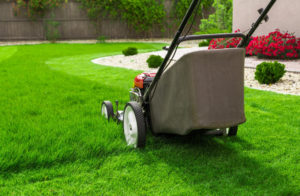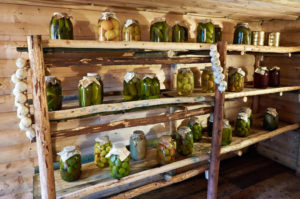Modern wooden floors are practically not attached to the base with nails and screws, but are laid in the so-called floating way. That is, without rigid fixation with the usual fasteners. The advantages of such coatings are excellent noise absorption and easy installation.
Floating floor on straps
On the concrete base, first lay a plastic film, and on top of it, sound insulation made of foam, corrugated cardboard or rolled cork material. The latter is more expensive, but will last longer (foam and corrugated cardboard crumple over time, which reduces the effectiveness of sound insulation). To avoid shifting the insulation layer, it is fixed with adhesive tape. Between the strips of insulation tape and the walls leave a gap – in this place, when laying the coating, put wedges. Laying the floorboards begins from one of the corners, placing the floorboards with a tongue-and-groove to the wall, and attaching the tie straps to them in a suitable place. Each of the belts is screwed to the first row of floorboards. The first bracket is attached with a screw to the floorboard from the side of the ridge, that is, from the opposite wall. If the wall is on the right – the corresponding bracket is attached from below to the left side of the floorboard, and so that the next floorboard can engage with the next belt bracket. The main thing is to lay the first floorboards, the rest will just need to be attached to them with the help of belts.
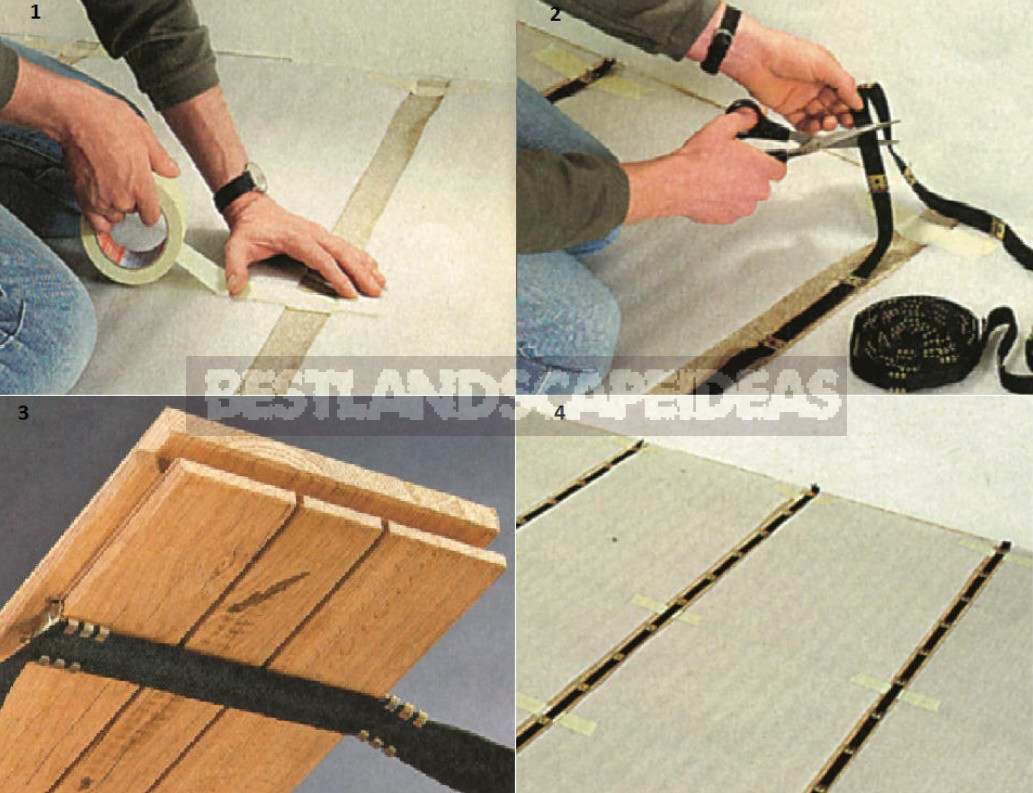
1. On the base of the floor, put strips of sound insulation with a width of no more than 50 cm, leaving a free space between them with a width of 5 cm, and fix them with adhesive tape. 2. Place a belt with brackets between the insulation strips. At the wall, the belt is cut off with scissors. 3. Built-in strap hook bracket at the bottom of each Board on both sides, bonding, so everything is coated. 4. The first and last belts are placed along the walls and close to them. With this in mind, the last strip of insulation is cut out
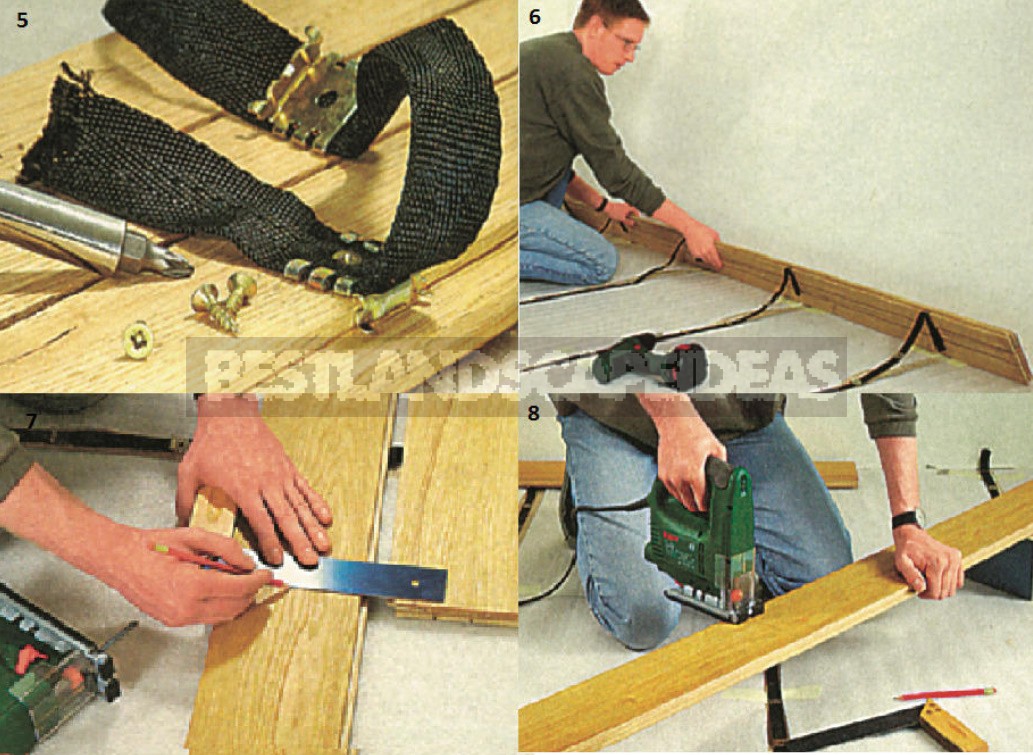
5. It is important that the bracket is firmly attached to the side of the floorboard on which the comb is located. 6. When turning the floorboard face up, it will lie with the tongue to the wall, and the straps – in the direction from the wall.The brackets are positioned so that they can catch on the next floorboard. 7-8. Having determined the length of the last floorboard in the row and having outlined the cutting line, cut it off with an electric jigsaw

9. Wearing a stripe on the tongue to the ridge already laid floorboards, pull the strap to clip caught on the pile (you can tell by the specific sound). The remaining piece of floorboard from the first row is placed first in the next row. In this case, there will be no overlapping of seams in adjacent rows. 10. During laying, the tongue-and-groove joints at the ends of the floorboards are coated with glue
Laying floorboards in a sticky mats
This method of laying the floor covering involves gluing the floorboards with the entire surface, but not to the base of the floor, but to the elastic mats laid on it. One side of the mats is provided with a film. These mats are rolled. Therefore, it will be quite difficult to separate the floorboards from the mats without damaging the latter.

11. Elastic mats are spread out on the floor, laying the strips close to each other without any overlap. Each of the laid strips should have a length allowance approximately equal to the width of the two floorboards. Cutting of mats is carried out with a cutter. 12. Having covered the entire surface of the floor with mats, from each strip at one of the walls, about 40 cm pull the film and bend it. 13. The parts of mats released from the film are cut off using the floorboard as a ruler. Then each strip of mats is moved back to the wall
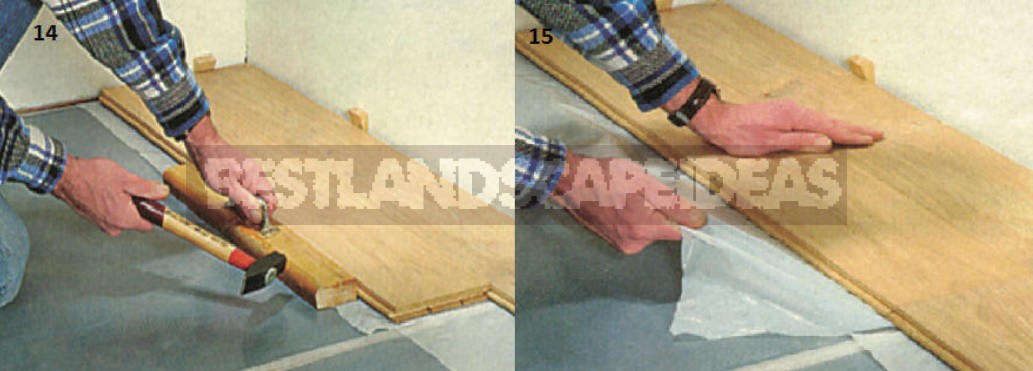
14. Put the first and second rows of floorboards on the bent film and install wedges against the wall. 15. Having laid two rows of floorboards, the film is pulled out from under the floorboards, holding the floorboards firmly. Then lay the next two rows of floorboards and so on
Adhesive bonding of floorboards with glue
For conventional floorboards, this method of connection is unacceptable – “working wood” can cause warping of the coating. We are talking about special floorboards, in which inserts made of fiberglass are embedded at a certain distance from each other, which prevent warping during shrinkage and swelling. This allows you to connect the boards to the glue, which is applied only to the tongue and groove. Any mineral base requires pre-laying of a plastic film. Foam material, corrugated cardboard, or cork mats can be used as sound insulation. Laying of floorboards is carried out as shown in photos 16-20.

16. Having accurately verified the position of the boards (if the walls are uneven, use wedges), proceed to their laying. 17. On the back side in the floorboard at a certain distance from each other, inserts made of fiberglass are embedded, preventing warping. 18. The dowels selected in the longitudinal and end edges are coated with glue
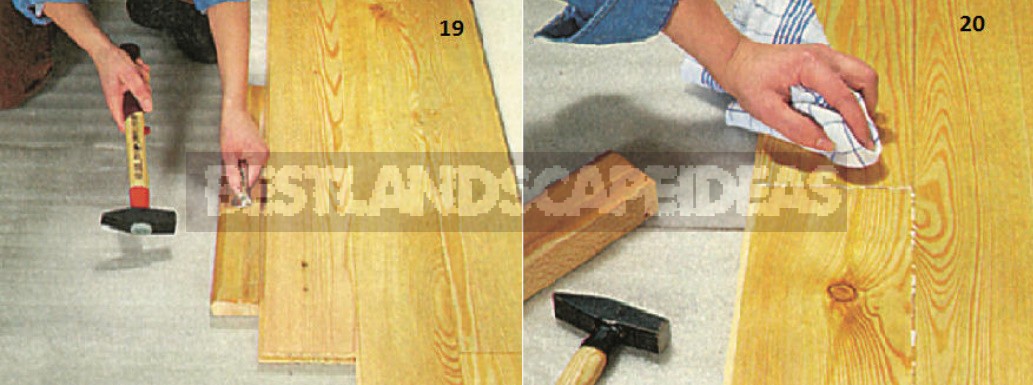
19. Using a hammer and a lining bar, the boards are tightly adjusted one to the other. 20. Remove any excess glue with a soft, clean cloth.


